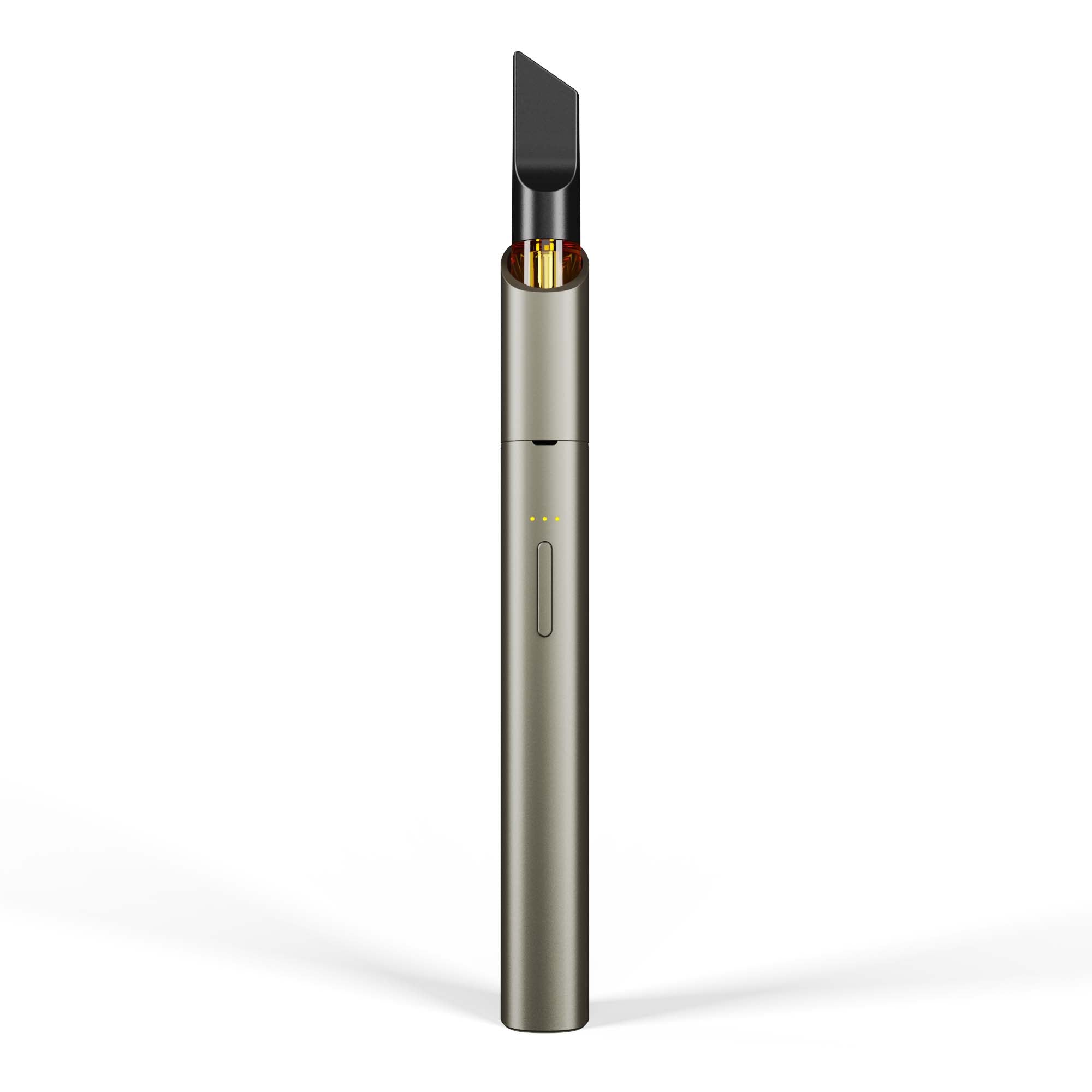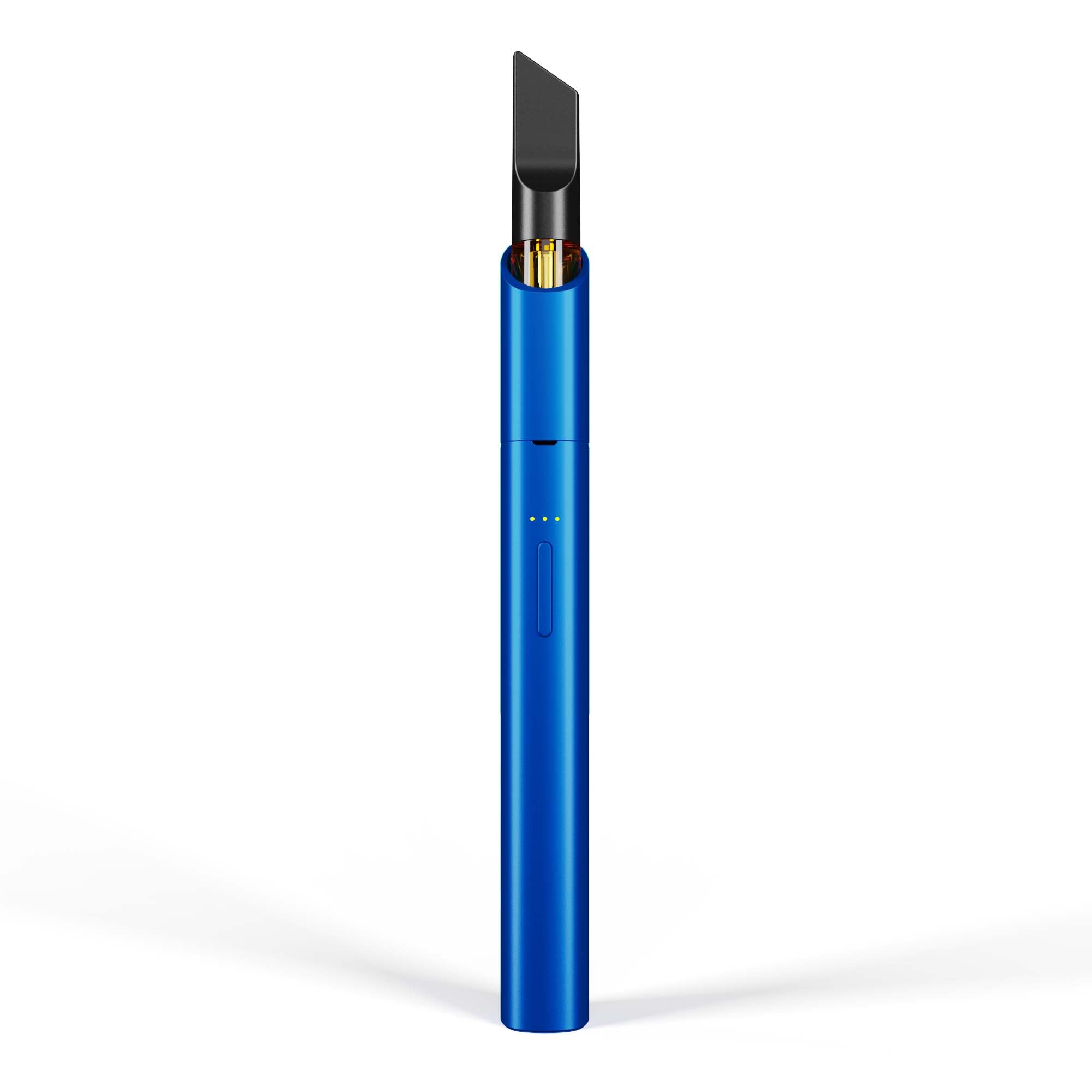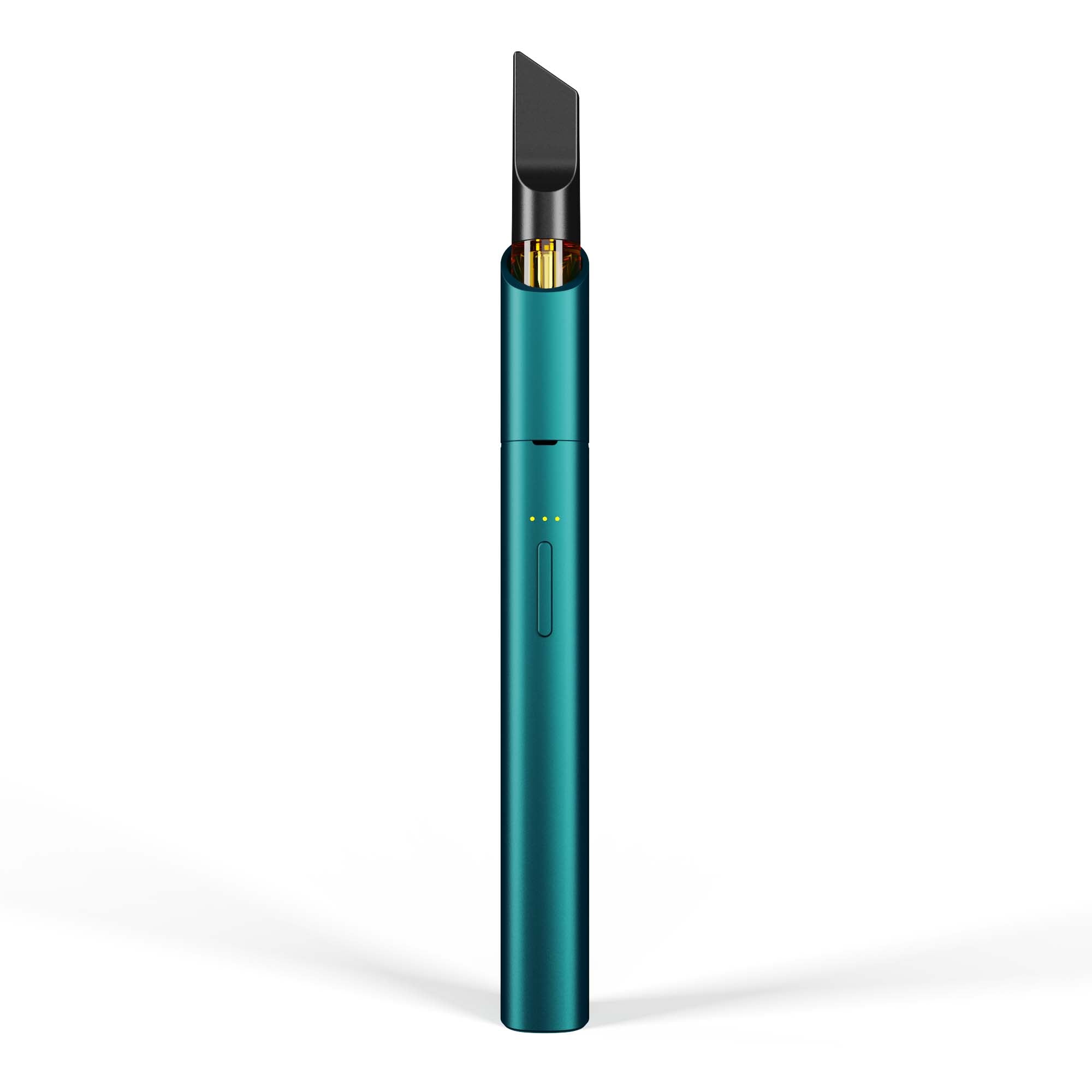Coil Building Techniques
Mastering coil building techniques can significantly enhance your vaping experience, allowing for greater customization and control over flavor and vapor production.
Using Different Coil Materials
Coil building involves crafting the heating element within your vape device, enabling you to tailor your vaping experience precisely to your preferences.
- Kanthal: A popular choice due to its excellent heat conductivity and affordability, Kanthal coils provide a balanced vaping experience.
- Nichrome: Known for its higher resistance compared to Kanthal, Nichrome produces thicker clouds and is favored by those who prefer a hotter vape.
- Stainless Steel: Offers good durability and temperature control, allowing for more complex vaping techniques like temperature control vaping.
- Titanium: A premium option known for its high melting point and excellent heat retention, Titanium coils are often used in devices with advanced temperature control features.
Experimenting with different coil materials allows you to explore a wide range of vaping styles, from smooth and flavorful to dense and powerful.
Optimizing Coil Resistance

Optimizing coil resistance is crucial for achieving the desired vaping experience. The resistance of your coil directly affects the temperature at which it heats up and subsequently influences the flavor and vapor production.
Coil resistance is measured in ohms (Ω). Generally, lower resistance coils heat up faster and produce more vapor, while higher resistance coils heat up slower and provide a tighter draw with more pronounced flavor.
To adjust coil resistance, you can change the gauge of your wire or the number of wraps.
Finer gauge wires (lower numerical value) have lower resistance, while thicker gauge wires (higher numerical value) have higher resistance.
Wicking Strategies for Enhanced Flavor
Wicking strategies play a vital role in extracting the full flavor potential from your e-liquid. Proper wicking ensures that the liquid reaches the coil efficiently, preventing dry hits and delivering a smooth, flavorful vape.
- Wick Material: Cotton is widely regarded as the gold standard for vaping wicks due to its natural absorption properties and ability to withstand high temperatures. Organic cotton is a popular choice among vapers due to its purity and lack of additives.
- Wick Placement: The wick should be positioned snugly within the coil but not overly tight. Aim for even contact between the wick and the coil without blocking airflow.
- Wick Length: The ideal wick length depends on your atomizer design. Generally, the wick should extend slightly beyond the bottom of the coil to allow for proper liquid absorption.
- Priming the Wick: Before your first vape or after changing your wick, it’s essential to prime it with e-liquid. This ensures the wick is thoroughly saturated and ready to deliver flavor.
Experimenting with different wick materials, placement, and lengths can help you fine-tune your vaping experience and unlock the full flavor profile of your favorite e-liquids.
Liquid Selection and Mixing
Liquid selection and mixing are crucial aspects of optimizing your vaping journey. Choosing the right e-liquid for your personal preferences and understanding how to blend flavors can significantly enhance your overall experience.
Choosing the Right VG/PG Ratio
One key decision when it comes to e-liquids is choosing the right VG/PG ratio. VG (vegetable glycerin) is known for producing thicker clouds, while PG (propylene glycol) provides a smoother throat hit and carries flavor better.
A higher VG ratio generally results in more vapor production but might deliver less pronounced flavor, while a higher PG ratio produces a thinner cloud but enhances flavor intensity. The ideal ratio depends on individual preferences and vaping styles.
For those who prioritize massive clouds, a high VG (70/30 or even 80/20) ratio is recommended. Cloud chasers often experiment with ratios up to 90VG/10PG.
Vapers who favor a stronger throat hit and more pronounced flavor profiles may prefer a higher PG ratio (60/40 or 70/30).
Experimenting with Nicotine Strengths
Liquid selection and mixing can be incredibly rewarding, allowing you to customize your vaping experience perfectly. Understanding the role of nicotine strength is a crucial step in this process.
Nicotine levels are typically measured in milligrams per milliliter (mg/mL) and directly influence the intensity of the throat hit and overall sensation.
Beginners or those sensitive to nicotine often start with lower concentrations, such as 3 mg/mL or 6 mg/mL.
As you become more accustomed to vaping, you can gradually increase the strength to find a level that suits your preference.
Experimenting with different nicotine strengths allows you to adjust the intensity of your vaping experience and find the sweet spot that delivers both satisfaction and a pleasant throat hit.
Flavor Profile Exploration
Mastering coil building techniques can significantly enhance your vaping experience, allowing for greater customization and control over flavor and vapor production. Coil building involves crafting the heating element within your vape device, enabling you to tailor your vaping experience precisely to your preferences.
- Kanthal: A popular choice due to its excellent heat conductivity and affordability, Kanthal coils provide a balanced vaping experience.
- Nichrome: Known for its higher resistance compared to Kanthal, Nichrome produces thicker clouds and is favored by those who prefer a hotter vape.
- Stainless Steel: Offers good durability and temperature control, allowing for more complex vaping techniques like temperature control vaping.
- Titanium: A premium option known for its high melting point and excellent heat retention, Titanium coils are often used in devices with advanced temperature control features.
Experimenting with different coil materials allows you to explore a wide range of vaping styles, from smooth and flavorful to dense and powerful.
Optimizing coil resistance is crucial for achieving the desired vaping experience. The resistance of your coil directly affects the temperature at which it heats up and subsequently influences the flavor and vapor production.
Coil resistance is measured in ohms (Ω). Generally, lower resistance coils heat up faster and produce more vapor, while higher resistance coils heat up slower and provide a tighter draw with more pronounced flavor.
To adjust coil resistance, you can change the gauge of your wire or the number of wraps.
Finer gauge wires (lower numerical value) have lower resistance, while thicker gauge wires (higher numerical value) have higher resistance.
Wicking strategies play a vital role in extracting the full flavor potential from your e-liquid. Proper wicking ensures that the liquid reaches the coil efficiently, preventing dry hits and delivering a smooth, flavorful vape.
- Wick Material: Cotton is widely regarded as the gold standard for vaping wicks due to its natural absorption properties and ability to withstand high temperatures. Organic cotton is a popular choice among vapers due to its purity and lack of additives.
- Wick Placement: The wick should be positioned snugly within the coil but not overly tight. Aim for even contact between the wick and the coil without blocking airflow.
- Wick Length: The ideal wick length depends on your atomizer design. Generally, the wick should extend slightly beyond the bottom of the coil to allow for proper liquid absorption.
- Priming the Wick: Before your first vape or after changing your wick, it’s essential to prime it with e-liquid. This ensures the wick is thoroughly saturated and ready to deliver flavor.
Experimenting with different wick materials, placement, and lengths can help you fine-tune your vaping experience and unlock the full flavor profile of your favorite e-liquids.
Liquid selection and mixing are crucial aspects of optimizing your vaping journey. Choosing the right e-liquid for your personal preferences and understanding how to blend flavors can significantly enhance your overall experience.
One key decision when it comes to e-liquids is choosing the right VG/PG ratio. VG (vegetable glycerin) is known for producing thicker clouds, while PG (propylene glycol) provides a smoother throat hit and carries flavor better.
A higher VG ratio generally results in more vapor production but might deliver less pronounced flavor, while a higher PG ratio produces a thinner cloud but enhances flavor intensity. The ideal ratio depends on individual preferences and vaping styles.
For those who prioritize massive clouds, a high VG (70/30 or even 80/20) ratio is recommended. Cloud chasers often experiment with ratios up to 90VG/10PG.
Vapers who favor a stronger throat hit and more pronounced flavor profiles may prefer a higher PG ratio (60/40 or 70/30).
Liquid selection and mixing can be incredibly rewarding, allowing you to customize your vaping experience perfectly. Understanding the role of nicotine strength is a crucial step in this process.

Nicotine levels are typically measured in milligrams per milliliter (mg/mL) and directly influence the intensity of the throat hit and overall sensation.
Beginners or those sensitive to nicotine often start with lower concentrations, such as 3 mg/mL or 6 mg/mL.
As you become more accustomed to vaping, you can gradually increase the strength to find a level that suits your preference.
Experimenting with different nicotine strengths allows you to adjust the intensity of your vaping experience and find the sweet spot that delivers both satisfaction and a pleasant throat hit.
Temperature Control Settings
Temperature control settings are a key aspect of modern vape devices, allowing users to fine-tune the heating temperature of the coil for optimal flavor and vapor production.
Understanding Wattage and Temperature Modes
Most advanced vaping devices offer temperature control modes, enabling you to set specific temperatures at which your coil heats up. This level of precision allows you to avoid overheating the coil and producing burnt flavors while also maximizing vapor production.
Understanding wattage is essential for effectively utilizing temperature control settings. Wattage refers to the power output of your device and directly influences the coil’s temperature.
Temperature Control Modes: Temperature control vaping modes typically allow you to select a desired temperature in Celsius or Fahrenheit. The device will then automatically adjust the wattage to maintain that specific temperature.
Wattage and Temperature Relationship: While temperature control settings regulate the target temperature, the actual wattage required can vary depending on factors such as coil resistance, wick material, and e-liquid viscosity.
Different vaping devices may offer various temperature control modes:
- Preset Modes: Some devices come with preset temperature settings optimized for specific types of coils or vaping styles.
- Custom Mode: Many devices allow you to set your own custom temperature range.
Experimentation and Adjustment: It’s crucial to experiment with different wattage settings and temperature profiles to find what works best for your chosen e-liquid, coil type, and vaping preferences.
Finding the Sweet Spot for Vapor Production and Flavor
Temperature control settings are a key aspect of modern vape devices, allowing users to fine-tune the heating temperature of the coil for optimal flavor and vapor production. Most advanced vaping devices offer temperature control modes, enabling you to set specific temperatures at which your coil heats up. This level of precision allows you to avoid overheating the coil and producing burnt flavors while also maximizing vapor production.
Understanding wattage is essential for effectively utilizing temperature control settings. Wattage refers to the power output of your device and directly influences the coil’s temperature.
Temperature Control Modes: Temperature control vaping modes typically allow you to select a desired temperature in Celsius or Fahrenheit. The device will then automatically adjust the wattage to maintain that specific temperature.
Wattage and Temperature Relationship: While temperature control settings regulate the target temperature, the actual wattage required can vary depending on factors such as coil resistance, wick material, and e-liquid viscosity.
Different vaping devices may offer various temperature control modes:
- Preset Modes: Some devices come with preset temperature settings optimized for specific types of coils or vaping styles.
- Custom Mode: Many devices allow you to set your own custom temperature range.
Experimentation and Adjustment: It’s crucial to experiment with different wattage settings and temperature profiles to find what works best for your chosen e-liquid, coil type, and vaping preferences.
Utilizing Preheat Functions
Temperature control settings are a key aspect of modern vape devices, allowing users to fine-tune the heating temperature of the coil for optimal flavor and vapor production. Most advanced vaping devices offer temperature control modes, enabling you to set specific temperatures at which your coil heats up. This level of precision allows you to avoid overheating the coil and producing burnt flavors while also maximizing vapor production.
Understanding wattage is essential for effectively utilizing temperature control settings. Wattage refers to the power output of your device and directly influences the coil’s temperature. Temperature Control Modes: Temperature control vaping modes typically allow you to select a desired temperature in Celsius or Fahrenheit. The device will then automatically adjust the wattage to maintain that specific temperature.
Wattage and Temperature Relationship: While temperature control settings regulate the target temperature, the actual wattage required can vary depending on factors such as coil resistance, wick material, and e-liquid viscosity. Different vaping devices may offer various temperature control modes: Preset Modes: Some devices come with preset temperature settings optimized for specific types of coils or vaping styles. Custom Mode: Many devices allow you to set your own custom temperature range.
Experimentation and Adjustment: It’s crucial to experiment with different wattage settings and temperature profiles to find what works best for your chosen e-liquid, coil type, and vaping preferences.
Utilizing preheat functions in your vape device can further enhance your vaping experience by providing a quick and efficient way to prepare your coils for optimal performance. Preheat functions typically involve briefly heating the coil at a lower temperature before initiating a regular vape session.
This initial burst of heat helps to quickly warm up the wick, ensuring that the e-liquid is properly vaporized from the start. The result is smoother flavor delivery, reduced dry hits, and improved overall vaping experience. Preheat functions can often be customized, allowing you to adjust the preheat duration or temperature to suit your preferences.
Vape Tank Optimization
Mastering coil building techniques can significantly enhance your vaping experience, allowing for greater customization and control over flavor and vapor production. Coil building involves crafting the heating element within your vape device, enabling you to tailor your vaping experience precisely to your preferences.
Optimizing coil resistance is crucial for achieving the desired vaping experience. The resistance of your coil directly affects the temperature at which it heats up and subsequently influences the flavor and vapor production.
Coil resistance is measured in ohms (Ω). Generally, lower resistance coils heat up faster and produce more vapor, while higher resistance coils heat up slower and provide a tighter draw with more pronounced flavor.
To adjust coil resistance, you can change the gauge of your wire or the number of wraps. Finer gauge wires (lower numerical value) have lower resistance, while thicker gauge wires (higher numerical value) have higher resistance.
Wicking strategies play a vital role in extracting the full flavor potential from your e-liquid. Proper wicking ensures that the liquid reaches the coil efficiently, preventing dry hits and delivering a smooth, flavorful vape.
- Wick Material: Cotton is widely regarded as the gold standard for vaping wicks due to its natural absorption properties and ability to withstand high temperatures. Organic cotton is a popular choice among vapers due to its purity and lack of additives.
- Wick Placement: The wick should be positioned snugly within the coil but not overly tight. Aim for even contact between the wick and the coil without blocking airflow.
- Wick Length: The ideal wick length depends on your atomizer design. Generally, the wick should extend slightly beyond the bottom of the coil to allow for proper liquid absorption.
- Priming the Wick: Before your first vape or after changing your wick, it’s essential to prime it with e-liquid. This ensures the wick is thoroughly saturated and ready to deliver flavor.
Liquid selection and mixing are crucial aspects of optimizing your vaping journey. Choosing the right e-liquid for your personal preferences and understanding how to blend flavors can significantly enhance your overall experience. One key decision when it comes to e-liquids is choosing the right VG/PG ratio. VG (vegetable glycerin) is known for producing thicker clouds, while PG (propylene glycol) provides a smoother throat hit and carries flavor better.
A higher VG ratio generally results in more vapor production but might deliver less pronounced flavor, while a higher PG ratio produces a thinner cloud but enhances flavor intensity. The ideal ratio depends on individual preferences and vaping styles.
For those who prioritize massive clouds, a high VG (70/30 or even 80/20) ratio is recommended. Cloud chasers often experiment with ratios up to 90VG/10PG. Vapers who favor a stronger throat hit and more pronounced flavor profiles may prefer a higher PG ratio (60/40 or 70/30).
Liquid selection and mixing can be incredibly rewarding, allowing you to customize your vaping experience perfectly. Understanding the role of nicotine strength is a crucial step in this process.
Nicotine levels are typically measured in milligrams per milliliter (mg/mL) and directly influence the intensity of the throat hit and overall sensation. Beginners or those sensitive to nicotine often start with lower concentrations, such as 3 mg/mL or 6 mg/mL.
As you become more accustomed to vaping, you can gradually increase the strength to find a level that suits your preference.
Experimenting with different nicotine strengths allows you to adjust the intensity of your vaping experience and find the sweet spot that delivers both satisfaction and a pleasant throat hit.
Exploring Different Airflow Options
Exploring different airflow options in your vape tank can significantly impact your vaping experience.
Airflow refers to the amount of air that passes through the atomizer, directly influencing the vapor production, flavor intensity, and overall smoothness of your inhale. Most vape tanks offer adjustable airflow systems, allowing you to fine-tune this parameter to suit your preferences.
Here are some common airflow configurations and their effects:
* **Closed Airflow:**
This setting restricts airflow significantly, creating a more restrictive and tighter draw.

Closed airflow is often preferred by vapers who enjoy a stronger throat hit and concentrated flavor. It can also help produce denser clouds at lower wattages.
* **Semi-Open Airflow:** A middle ground between closed and open airflow, providing a balance of restriction and air intake. This setting often delivers a satisfying combination of flavor and cloud production while maintaining a comfortable throat hit.
* **Open Airflow:**
This configuration allows for the greatest amount of air to flow through the atomizer, resulting in a loose and airy draw. Open airflow is typically favored by vapers who prioritize massive vapor clouds and a cooler inhale. However, it can sometimes result in a less pronounced flavor.
Experimenting with different airflow settings is key to finding your ideal vaping experience. Consider factors like personal preference, coil type, e-liquid viscosity, and desired cloud size when adjusting your airflow.
Using Mesh Coils for Increased Surface Area
Mesh coils have become increasingly popular in vape tanks due to their superior performance compared to traditional round wire coils. Their unique design offers several advantages that enhance the vaping experience:
- Increased Surface Area: Mesh coils feature a large, expanded surface area compared to round wire coils. This increased contact with e-liquid leads to faster and more efficient heating, resulting in improved flavor production and vapor density.
- Enhanced Heat Distribution: The flat mesh structure promotes even heat distribution across the coil, minimizing hot spots and ensuring consistent vaping performance.
- Quicker Ramp-Up Time: Due to their larger surface area, mesh coils heat up faster, reducing wait time before you can enjoy your vape. This is particularly noticeable when using high resistance coils.
- Improved Flavor: The combination of increased surface area and even heat distribution contributes to a richer, more flavorful vaping experience.
Experimenting with mesh coils in your vape tank can significantly upgrade your vaping experience by unlocking improved flavor, vapor production, and overall performance.
Cleaning and Maintaining Your Tank Regularly
## Vape Tank Optimization: Cleaning and Maintaining Your Tank Regularly
Maintaining a clean vape tank is crucial for both the taste of your vape and the longevity of your device. Over time, residue from e-liquid, oils, and condensation can build up inside your tank, affecting flavor and potentially leading to performance issues. Regular cleaning helps to remove these deposits and ensures a consistently enjoyable vaping experience.
Here’s a comprehensive guide to cleaning and maintaining your vape tank:
**1. Gather Your Supplies:**
* Isopropyl Alcohol (at least 70% concentration)
* Cotton swabs or pipe cleaners
* Small brush (optional)
* Distilled water
* Air compressor or dry cloth (for drying)
**2. Dismantle the Tank:** Carefully remove the tank from your mod and disassemble it into its components (base, chimney, top cap, etc.). Consult your device’s manual for specific instructions on disassembly if needed.
**3. Initial Rinse:**
Rinse all disassembled parts thoroughly with warm, distilled water to remove any loose debris or residue.
**4. Deep Clean with Alcohol:** Dip a cotton swab or pipe cleaner into isopropyl alcohol and gently wipe down the inside surfaces of each tank component, paying attention to areas where residue tends to accumulate (airflow slots, coil chamber, etc.). For stubborn deposits, you can use a small brush for gentle scrubbing.
**5. Rinse Again:** Rinse all components thoroughly with distilled water to remove any remaining alcohol residue.
**6. Dry Completely:**
Use an air compressor or allow the parts to air dry completely before reassembling. It’s essential that all parts are dry to prevent condensation and ensure optimal performance.
**7. Reassemble and Prime:** Carefully reassemble your tank according to your device’s instructions. Prime your coil(s) by carefully filling the tank with e-liquid, allowing it to soak into the wicking material for several minutes before using.
**Additional Tips for Maintenance:**
* **Regular Cleaning:** Clean your tank at least once a week or more frequently if you vape heavily or use viscous e-liquids.
* **Avoid Extreme Temperatures:** Store your vape tank in a cool, dry place. Exposure to extreme heat or cold can damage the device and affect its performance.
* **Check for Leaks:** Regularly inspect your tank for any signs of leaks or cracks.
Order Vista Edge Series for the best experience
- Retinol Peel Near Elstead, Surrey - June 2, 2025
- The Eco-Friendly Side Of Vista Edge Vape: A Sustainable Vaping Option - June 2, 2025
- Skin Treatment & Skincare Consultations Near Ranmore, Surrey - June 1, 2025
